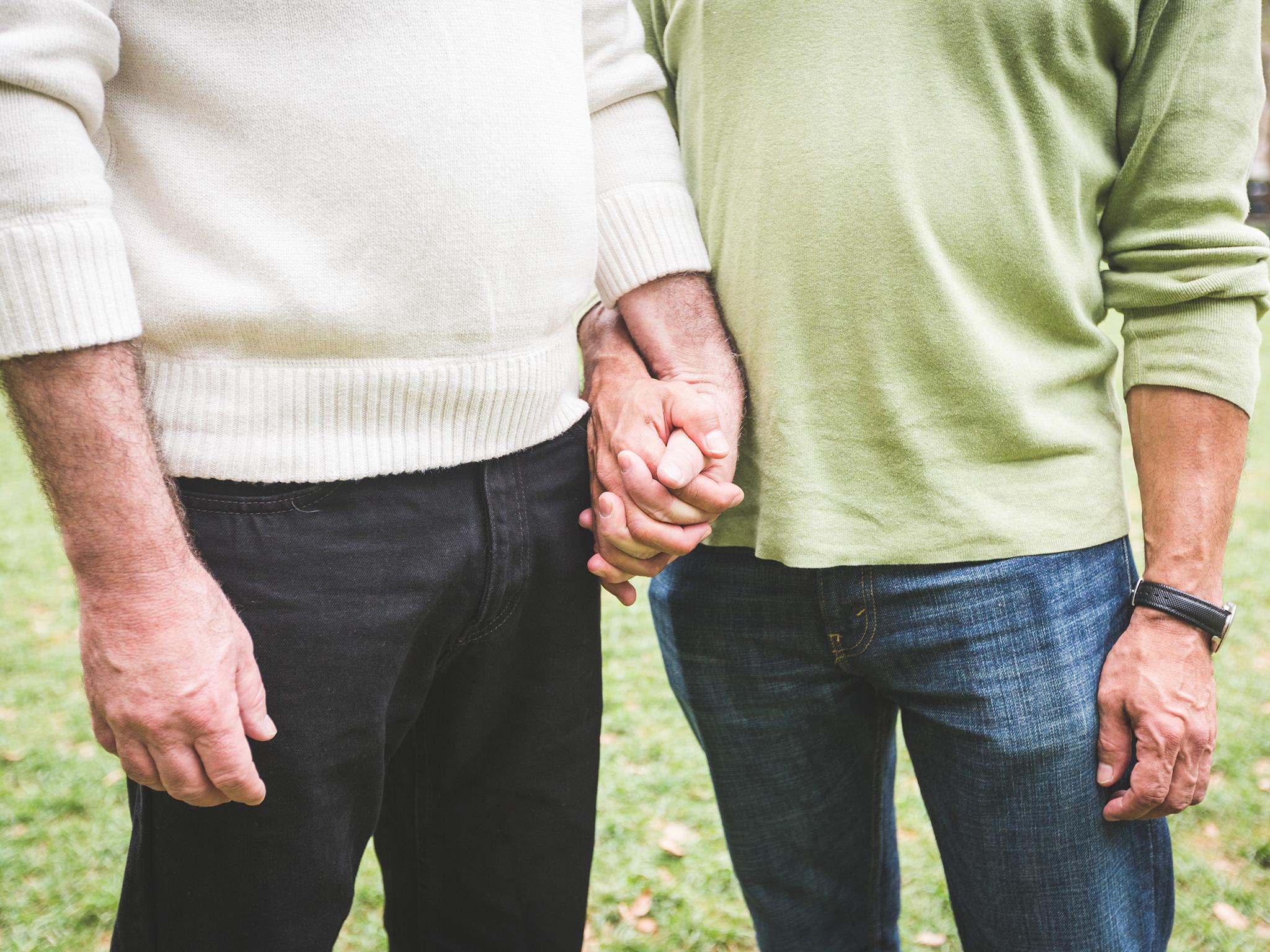The terror and prejudice of the 1980s AIDs crisis remembered by a gay man who lived through it
Michael Penn watched his loved ones drop like flies during the 1980s at a time when homophobia and misunderstanding were rife

When Michael Penn’s partner Brian Davis began rapidly losing weight in the mid-1980s, a friend of the couple suggested he ought to visit a doctor to check he didn't have that mysterious killer virus. It’s probably nothing, but it’s better to be safe than sorry, they thought. Five months later, Brian was dead.
Before Brian passed away, he and Michael’s calendar was filling up with more funerals than normal for two men in their late thirties. In the space of half a decade, 20 of Michael’s friends died.
“Back in the day it was very worrying. I had many friends dropping like flies,” Michael, a retired east Londoner who now lives in Woodbridge, Suffolk, recalls to The Independent. “My partner and I lost friends and no one knew why the so many people were dying.”
When doctors diagnosed Brian with AIDs, a test confirmed that Michael was HIV positive. Now 75, and one of the longest surviving people in the UK with HIV, Michael is a spokesperson for the Terrence Higgins Trust charity to raise awareness about the condition.
But in the 1980s, the virus was little understood. Scientists were yet to pin-point why swathes of otherwise healthy people were dying from rare conditions. Misinformation and homophobia were rife. AIDs was labelled the “gay plague”, suggesting that it was spread among men who had sex with men (MSM). For a period of six months in 1982, the condition was mistakenly labelled “Gay Related Immune Deficiency”. In total, 35 million people have died of AIDs worldwide since the 1980s, including millions in Africa.
“One chap we knew very into taking poppers. He died of a lung infection and doctors said it was caused by his overuse of poppers. That was in the early 1980s.” In hindsight, the lung infection was likely triggered by AIDs, says Michael.
“People started getting other things wrong Kaposi's sarcoma,” he adds, referring to a rare type of skin cancer caused by an opportunistic virus common in those with weak immune systems.
“Brian was taken ill during the Christmas of 1986,” recalls Michael of his partner of 17-and-a-half-years, with whom he lived in north London. He was diagnosed with Pneumocystis, a form of pneumonia caused by a fungus and Kaposi's sarcoma.
“It was an awful winter. I didn’t realise how ill he was until he was hospitalised. I watched him deteriorate over five months from a big strapping lad to a skeleton. What killed him in the end was a virus which attacks the central the nervous system.”
“The night I sat with him when he died I was distraught. I said to myself ‘don’t let this disease get you. Don’t let it spoil your life or kill you. Get on with it and look after your health'.”
I watched him deteriorate from a big strapping lad to a skeleton
Michael believes that his partner, who was the assistant director of the British Diabetic Association, his that he was ill because he feared he would die.
“Brian and I got a suspicious that he had something wrong but he was scared to do something about it. I think he knew it was going to be a death sentence. We didn’t talk about it.”
As HIV can take several years to show symptoms, Michael’s blood counts were normal, and he was apprehensive about taking AZT – the first drug created to tread the virus. But Michael was convinced during a visit to Washington State.
“I was on holiday in US and I saw a doctor in Washington State for a sore throat. I told him I was HIV positive but that I was confused about taking AZT. He told me ‘my wife had a blood transfusion tainted with HIV and she’s lying in a hospital bed dying with AIDs. Take full advantage of what you can get'.”
Looking back, Michael recalls how the LGBT community pulled together during what was a terrifying time.
“I think the gay community changed the way they behaved in terms of sleeping around and practising safe sex. The club scene in London was pretty wild. It was a brilliant time."
But Michael found little empathy from those outside of the community.
“People were ignorant. There was nothing known about the disease. No one knew how to treat it. The ordinary man in the street was very suspicious if he knew you were gay.”
“I remember after Brian died I went to local pub and the publican in my hearing said to someone 'don’t let anyone drink out of that glass'. I was furious.”
However, attitudes are still blinkered. More recently, a member of his local community was spreading a rumour that Michael had AIDS, rather than treatable HIV.
In fact, doctors recently told him he is healthier than most other men his age. To control the virus, Michael take two tablets a day. "As long as you get tested and get the right treatment you carry on living like I have," he stresses. "HIV is no longer a death sentence."
Join our commenting forum
Join thought-provoking conversations, follow other Independent readers and see their replies
25Comments